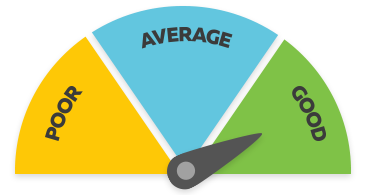Cabinet Maker
Kaihanga Kapata Taonga
Alternative titles for this job
Cabinet makers make and repair fittings and furniture for homes, businesses and boats.
Pay
Cabinet makers usually earn
$49K-$60K per year
Source: Competenz, 2017.
Job opportunities
Pay
Pay for cabinet makers varies depending on experience.
- Trainee cabinet makers usually earn minimum wage or above.
- Qualified cabinet makers usually earn between $49,000 and $60,000.
Source: Competenz, 2017.
- PAYE.net.nz website - use this calculator to convert pay and salary information
- Employment New Zealand website - information about minimum wage rates
(This information is a guide only. Find out more about the sources of our pay information)
What you will do
Cabinet makers may do some or all of the following:
- use computer-aided design (CAD) programs to design furniture
- select timber and other materials, and cut to size
- screw or glue the pieces together, and attach fittings such as handles
- trim, sand and polish or paint furniture
- repair or replace damaged furniture parts
- program computers to operate machinery
- calculate costs if they have their own cabinet-making business
- supervise other cabinet makers if working in a factory.
Skills and knowledge
Cabinet makers need to have:
- knowledge of furniture styles, and timber and cabinet-making materials
- cabinet-making skills, including knowledge of furniture-making and repair methods
- design skills
- technical drawing skills and the ability to read diagrams
- knowledge of production standards
- the ability to operate machinery and use tools correctly.
Self-employed cabinet makers need marketing and business skills.
Working conditions
Cabinet makers:
- usually work regular business hours but may work late or at weekends to complete orders
- work in factories or small workshops
- work in conditions that can be noisy, dusty and may contain fumes.
Entry requirements
To become a cabinet maker you need to complete an apprenticeship and gain a New Zealand Certificate in Furniture (Level 4) with strands in Cabinetmaking, Furniture Finishing, and Upholstery (Level 4). Competenz oversees furniture-making apprenticeships.
To become a marine cabinet maker you need to complete an apprenticeship and gain a New Zealand Certificate in Marine Interiors (Level 4). The New Zealand Marine and Specialised Technologies Academy (MAST) oversees marine interior apprenticeships.
- Competenz website - furniture and cabinet making apprenticeships
- New Zealand Marine and Specialised Technologies Academy (MAST) website - marine interiors
- More information about apprenticeships
Secondary education
A minimum of three years of secondary education is recommended. Useful subjects include English, maths, technology, and design & visual communication.
Personal requirements
Cabinet makers must be:
- quick and neat in their work
- patient
- accurate, with an eye for detail
- able to work independently or as part of a furniture factory team.
You need an eye for detail, so that your design in one bit isn't clashing with the design in another bit. Sometimes you can have a very square look, and if you have a square look then you don't want to have any round bits.

Russell Tuck
Cabinet Maker
Useful experience
Useful experience for cabinet makers includes:
- furniture sales work
- woodturning
- work in carpentry or joinery.
Physical requirements
Cabinet makers need to have steady hands and good hand-eye co-ordination. People with asthma or other breathing problems need to be able to control these conditions in the workshop.
Find out more about training
- Competenz
- 0800 526 1800 - info@competenz.org.nz - www.competenz.org.nz
- Marine and Specialised Technologies Academy (MAST)
- 09 360 0056 - info@mastacademy.com - www.mastacademy.com
What are the chances of getting a job?
Opportunities for apprentice cabinet makers growing
Opportunities for getting work as an apprentice cabinet maker have risen significantly as the government supports employers to take on apprentices in the high-demand housing and construction services industry.
Cabinet makers are in demand because interior installations including kitchen benchtops, bathroom and kitchen cabinetry, and built in wardrobes are increasingly needed for:
- new home builds which are on the rise nationwide, especially in Auckland due to an increasing population
- leaky home repairs
- renovating homes that have been affected by natural disasters such as earthquakes in Kaikōura, flooding in Bay of Plenty, and the Canterbury earthquakes rebuild
- upgrading existing homes, especially kitchen and bathroom cabinetry.
According to the Census, 2,502 cabinet makers worked in New Zealand in 2018.
Increase your chances of getting an apprenticeship
Ways to increase your chances of getting an apprenticeship include:
- doing a Gateway programme to gain units in cabinet making while at school
- demonstrating your craft skills and your attention to detail
- being committed, reliable and having good time management
- talking to your school career adviser about prospective apprenticeships
- having some building or building pre-trades experience
Opportunities for experienced cabinet makers particularly good
Job opportunities for experienced cabinet makers are particularly good. Many are setting up specialist kitchen manufacturing companies to meet the demand for kitchen cabinetry, including custom made kitchens.
Types of employers
Cabinet makers work for:
- large furniture manufacturing plants
- small specialist furniture businesses.
Many cabinet makers are self-employed.
Sources
- Lyne, A, training manager, Competenz, Careers New Zealand interview, April 2017.
- Ministry of Business, Innovation and Employment, '2006-2014 Occupation Data' (prepared for Careers New Zealand), 2015.
- Ministry of Business, Innovation and Employment, 'Future demand for construction workers', Projections from the National Construction Occupations Model, July 2016, (www.mbie.govt.nz).
- Scoop, Joyce S and Smith, N, 'Construction trades grow as building booms', 26 July 2016, (www.scoop.co.nz).
- Stats NZ, '2018 Census Data', 2019.
(This information is a guide only. Find out more about the sources of our job opportunities information)
Progression and specialisations
Cabinet makers can progress into supervisor or management roles, or become self-employed.
They may also specialise in making marine cabinets for boats, ships and yachts.
Last updated 27 March 2025


